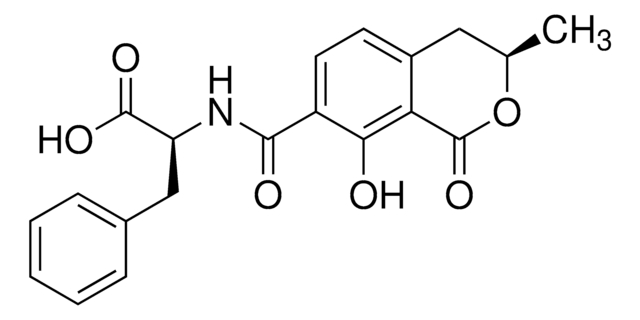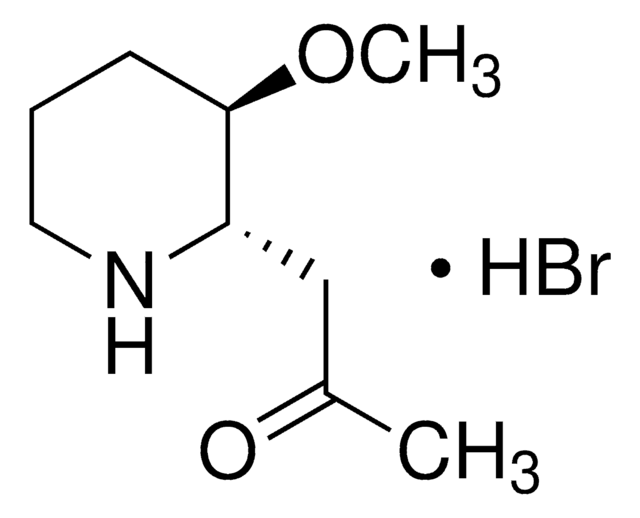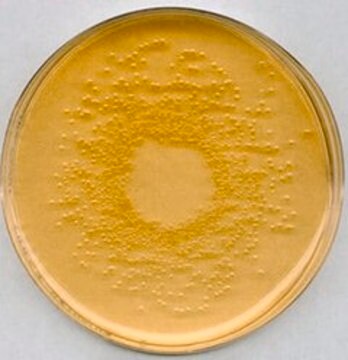MABS482
Anti-PL Scramblase 1 Antibody, clone 1A8
clone 1A8, from mouse
Synonym(e):
Phospholipid scramblase 1, PL Scramblase 1, Ca(2+)-dependent phospholipid scramblase 1, Erythrocyte phospholipid scramblase, MmTRA1b
About This Item
Empfohlene Produkte
Biologische Quelle
mouse
Qualitätsniveau
Antikörperform
purified antibody
Antikörper-Produkttyp
primary antibodies
Klon
1A8, monoclonal
Speziesreaktivität
human, mouse
Methode(n)
immunohistochemistry: suitable
immunoprecipitation (IP): suitable
western blot: suitable
Isotyp
IgG2bκ
NCBI-Hinterlegungsnummer
UniProt-Hinterlegungsnummer
Versandbedingung
wet ice
Posttranslationale Modifikation Target
unmodified
Angaben zum Gen
human ... PLSCR1(5359)
Allgemeine Beschreibung
Immunogen
Anwendung
Zelluläre Signaltransduktion
Signalübertragung & Neurowissenschaft
Immunohistochemistry Analysis: A 1:50 dilution from a representative lot detected PL Scramblase 1 in mouse colon tissue.
Western Blotting Analysis: A representative lot detected PL scramblase 1 in platelets and lung tissue from wild-type and PLSCR3-/-, but not PLSCR1-/-, mice, while little or no PL scramblase 1 was detected in adipocyte or muscle samples from wild-type or the knockout animals (Wiedmer, T., et al. (2004). Proc Natl Acad Sci USA. 101(36):13296-13301).
Western Blotting Analysis: A representative lot detected retroviral-mediated ectopic expression of murine PLSCR1 in SCF-ER-Hoxb8-immortalized myeloid progenitor cells from PLSCR1−/− mice (Chen, C.W., et al. (2011). J Leukoc Biol. 90(2):221-233).
Immunprecipitation Analysis: A representative lot immunoprecipitated PL scramblase 1 from murine bone marrow-derived mast cells (BMMCs) following IgE receptor activation. Tyrosine phosphorylation of PL scramblase 1 was then checked by Western blotting with clone 4G10 (Kassas, A., et al. (2014). PLoS One. 9(10):e109800).
Qualität
Western Blotting Analysis: 1.0 µg/mL of this antibody detected PL Scramblase 1 in 10 µg of HeLa cell lysate.
Zielbeschreibung
Physikalische Form
Lagerung und Haltbarkeit
Sonstige Hinweise
Haftungsausschluss
Sie haben nicht das passende Produkt gefunden?
Probieren Sie unser Produkt-Auswahlhilfe. aus.
Lagerklassenschlüssel
12 - Non Combustible Liquids
WGK
WGK 1
Flammpunkt (°F)
Not applicable
Flammpunkt (°C)
Not applicable
Analysenzertifikate (COA)
Suchen Sie nach Analysenzertifikate (COA), indem Sie die Lot-/Chargennummer des Produkts eingeben. Lot- und Chargennummern sind auf dem Produktetikett hinter den Wörtern ‘Lot’ oder ‘Batch’ (Lot oder Charge) zu finden.
Besitzen Sie dieses Produkt bereits?
In der Dokumentenbibliothek finden Sie die Dokumentation zu den Produkten, die Sie kürzlich erworben haben.
Unser Team von Wissenschaftlern verfügt über Erfahrung in allen Forschungsbereichen einschließlich Life Science, Materialwissenschaften, chemischer Synthese, Chromatographie, Analytik und vielen mehr..
Setzen Sie sich mit dem technischen Dienst in Verbindung.






